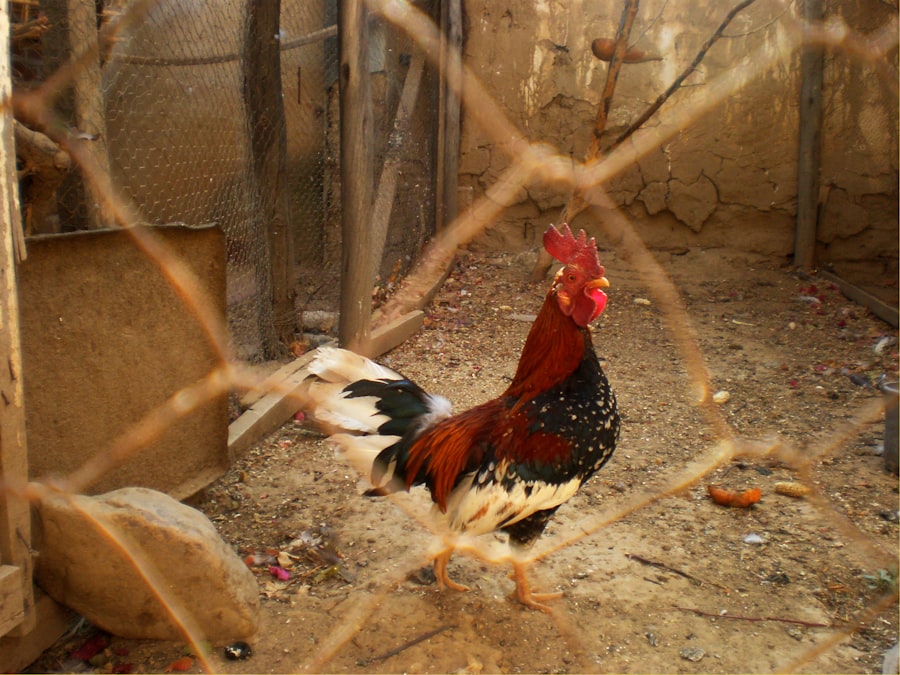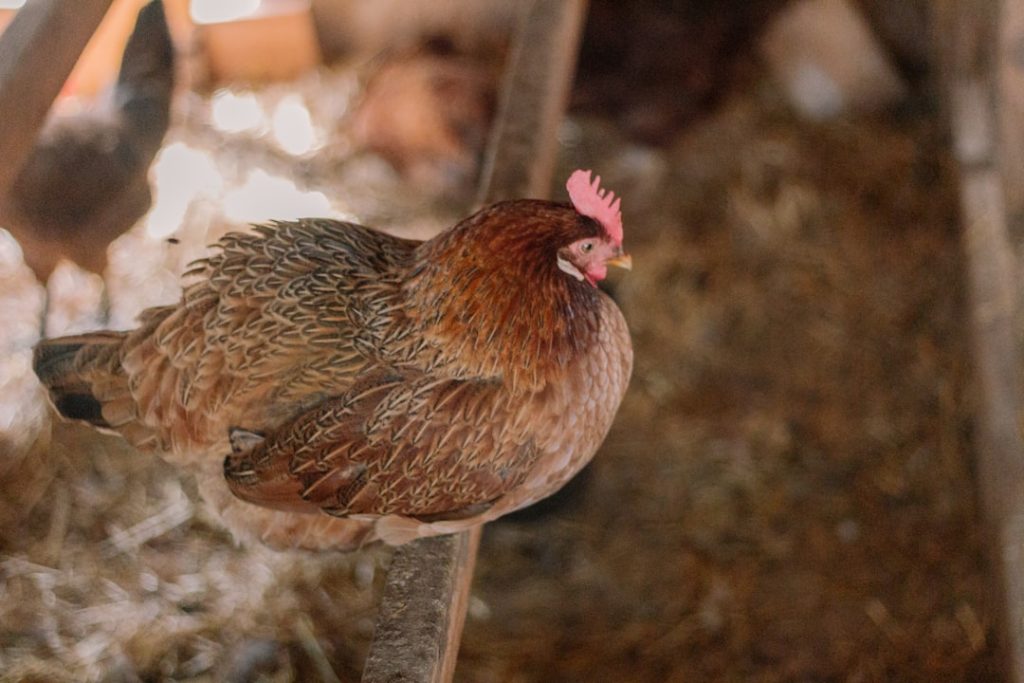Integrating chicks with mature chickens is a critical phase in poultry management. This process involves gradually introducing young birds to an established flock of adult chickens, with the aim of minimizing stress and potential conflicts. Successful integration is vital for maintaining flock harmony and ensuring the healthy development of young chicks.
The procedure requires careful planning, patience, and vigilant observation to facilitate a smooth transition for both the chicks and adult birds. Key aspects of the integration process include understanding the optimal timing, implementing appropriate introduction techniques, and recognizing signs of successful assimilation. Poultry keepers must also be prepared to address potential challenges that may arise during this period.
By mastering the art of chick integration, farmers and hobbyists can effectively manage their flocks and promote overall poultry health and productivity.
Table of Contents
- 1 Factors to Consider Before Integrating Chicks with Big Chickens
- 2 Ideal Age for Integrating Chicks with Big Chickens
- 3 Steps for Introducing Chicks to Big Chickens
- 4 Signs of Successful Integration
- 5 Problems to Watch for During Integration
- 6 Conclusion and Final Considerations
- 7 FAQs
- 7.1 How long should chicks be kept separate from big chickens?
- 7.2 Why should chicks be kept separate from big chickens?
- 7.3 What are the risks of introducing chicks to big chickens too early?
- 7.4 How can I ensure a smooth transition when introducing chicks to big chickens?
- 7.5 What signs should I look for to know when it’s safe to introduce chicks to big chickens?
Key Takeaways
- Chick integration is the process of introducing young chicks to older chickens in a flock.
- Factors to consider before integrating chicks with big chickens include size and age differences, space availability, and the temperament of the existing flock.
- The ideal age for integrating chicks with big chickens is around 8-12 weeks, when they are large enough to defend themselves but still young enough to adapt to the existing flock.
- Steps for introducing chicks to big chickens include gradual introduction, providing separate but visible living spaces, and monitoring the interactions closely.
- Signs of successful integration include peaceful coexistence, shared food and water, and the absence of aggressive behavior towards the chicks.
- Problems to watch for during integration include pecking, bullying, and injuries to the chicks, as well as stress and disruption to the existing flock dynamics.
- In conclusion, careful planning and monitoring are essential for successful chick integration, and it’s important to be prepared to intervene if any issues arise.
Factors to Consider Before Integrating Chicks with Big Chickens
Assessing the Existing Flock
The size and temperament of the existing flock are vital factors to consider. If the adult chickens are aggressive or territorial, integrating the chicks may be more challenging and potentially harmful.
Environmental and Resource Considerations
The size of the coop and outdoor run must be sufficient to accommodate both the chicks and adult chickens comfortably. The health and vaccination status of the chicks should also be considered to prevent the spread of diseases. Furthermore, separate feeding and watering stations for the chicks can help prevent competition and ensure equal access to resources.
Timing and Age Considerations
The age and size of the chicks being integrated are critical factors. Young chicks that are too small or fragile may be at risk of injury or stress when introduced to larger, more dominant adult chickens. It is essential to wait until the chicks are old enough and large enough to hold their own. Additionally, the weather and environmental conditions should be taken into account, and integration should be done during mild weather to minimize stress on both the young chicks and adult chickens.
Ideal Age for Integrating Chicks with Big Chickens

The ideal age for integrating chicks with big chickens is typically around 8-12 weeks old. At this age, the chicks are large enough to defend themselves against any potential aggression from the adult chickens, but still young enough to adapt to their new environment. It is important to wait until the chicks have developed their feathers and are strong enough to withstand any pecking or bullying from the older birds.
Additionally, by this age, the chicks have likely established a pecking order amongst themselves, which can help them navigate their place within the existing flock. Waiting until the chicks are at least 8 weeks old also allows them to become more independent and self-sufficient. They will have had time to develop their social skills and learn how to interact with other chickens within their own age group before being introduced to the adult flock.
This can help reduce stress and potential conflicts during integration. Overall, waiting until the chicks are around 8-12 weeks old provides them with the best chance of successfully integrating with the adult chickens and thriving within the existing flock.
Steps for Introducing Chicks to Big Chickens
Introducing chicks to big chickens should be done gradually and carefully to minimize stress and potential conflicts. The following steps can help facilitate a smooth integration process: 1. Separate but visible housing: Before introducing the chicks to the adult flock, it is important to provide them with a separate but visible housing area within the coop or run.
This allows the birds to become familiar with each other’s presence without direct physical contact. 2. Supervised interaction: Once the chicks have had some time to acclimate to their new environment, supervised interaction between the chicks and adult chickens can begin.
This can be done by allowing them to free-range together under close supervision or by placing a temporary barrier within the coop or run that allows visual contact but prevents physical interaction. 3. Gradual integration: Over time, the barrier between the chicks and adult chickens can be gradually removed, allowing them to interact more closely while still under supervision.
This gradual approach helps prevent sudden conflicts and gives both groups of birds time to adjust to each other’s presence. 4. Provide multiple food and water sources: It is important to provide multiple feeding and watering stations to prevent competition and ensure that all birds have access to essential resources.
This can help reduce potential conflicts over food and water during integration. 5. Monitor behavior: Throughout the integration process, it is crucial to closely monitor the behavior of both the chicks and adult chickens for any signs of aggression or stress.
If any conflicts arise, it may be necessary to separate the birds temporarily and reassess the integration process. By following these steps and taking a gradual approach to integration, poultry keepers can help facilitate a smooth transition for both the chicks and adult chickens.
Signs of Successful Integration
There are several signs that indicate a successful integration between chicks and big chickens. One of the most obvious signs is peaceful coexistence within the flock. If the chicks are able to move freely around the coop or run without being chased or pecked by the adult chickens, this is a positive indication that they have been accepted into the flock.
Another sign of successful integration is shared resources. If all birds are able to eat and drink without competition or aggression, this suggests that they have established a harmonious dynamic within the flock. Additionally, observing natural social interactions such as grooming, dust bathing, and roosting together can indicate that the integration process has been successful.
Furthermore, successful integration can be seen in the overall health and well-being of the birds. If the chicks are thriving, growing at a healthy rate, and exhibiting normal behavior patterns, this is a positive indication that they have successfully integrated with the adult chickens.
Problems to Watch for During Integration

Aggression from Adult Chickens
When integrating chicks with adult chickens, one common issue that may arise is aggression from the adult birds towards the young chicks. This can manifest as pecking, chasing, or even physical injury if not addressed promptly. It is essential to closely monitor the behavior of both groups of birds and intervene if any aggression is observed.
Bullying and Exclusion
Another problem that may occur during integration is bullying or exclusion of certain birds within the flock. This can happen if there is a significant size difference between the chicks and adult chickens, or if there are dominant individuals within the existing flock that assert their authority over the newcomers. It is crucial to observe social dynamics within the flock and address any instances of bullying or exclusion to ensure that all birds are able to coexist peacefully.
Stress-related issues such as decreased appetite, feather picking, or abnormal behavior patterns may indicate that the integration process is not going smoothly. It is vital to address these issues promptly and make any necessary adjustments to ensure that all birds are able to adapt comfortably to their new living arrangements.
By being aware of these potential problems and taking proactive measures to address them, poultry keepers can help ensure a successful integration process for both the chicks and adult chickens.
Conclusion and Final Considerations
Integrating chicks with big chickens is an important step in raising poultry that requires careful planning, patience, and close observation. By considering factors such as the size and temperament of the existing flock, the age and size of the chicks being integrated, and environmental conditions, poultry keepers can set the stage for a successful integration process. The ideal age for integrating chicks with big chickens is typically around 8-12 weeks old, when they are large enough to defend themselves but still young enough to adapt to their new environment.
The steps for introducing chicks to big chickens should be done gradually and carefully, with close supervision and monitoring of behavior throughout the process. Signs of successful integration include peaceful coexistence within the flock, shared resources, natural social interactions, and overall health and well-being of the birds. However, potential problems such as aggression from adult chickens, bullying or exclusion within the flock, and stress-related issues should be closely monitored and addressed as needed.
In conclusion, integrating chicks with big chickens is a critical aspect of poultry management that requires attention to detail and proactive intervention when necessary. By following these guidelines and remaining vigilant throughout the integration process, poultry keepers can help ensure a smooth transition for both the young chicks and adult chickens within their flock.
If you’re wondering how long to keep chicks separate from big chickens, you may also be interested in learning about the best practices for building a chicken coop. Check out this article for tips on creating a safe and comfortable environment for your chickens.
FAQs
How long should chicks be kept separate from big chickens?
Chicks should be kept separate from big chickens for at least 6-8 weeks to ensure they are fully grown and able to defend themselves.
Why should chicks be kept separate from big chickens?
Chicks should be kept separate from big chickens to protect them from potential harm or bullying from the larger birds. It also allows the chicks to grow and develop without competition for food and space.
What are the risks of introducing chicks to big chickens too early?
Introducing chicks to big chickens too early can result in the chicks being bullied, injured, or even killed by the larger birds. It can also lead to stress and stunted growth for the chicks.
How can I ensure a smooth transition when introducing chicks to big chickens?
To ensure a smooth transition, gradually introduce the chicks to the big chickens by allowing them to see and interact with each other through a wire barrier. Once the chicks are fully grown and able to defend themselves, they can be integrated into the flock.
What signs should I look for to know when it’s safe to introduce chicks to big chickens?
When the chicks are fully feathered, similar in size to the big chickens, and able to hold their own in a physical confrontation, it is generally safe to introduce them to the big chickens. It’s important to monitor their interactions closely during the integration process.
Meet Walter, the feathered-friend fanatic of Florida! Nestled in the sunshine state, Walter struts through life with his feathered companions, clucking his way to happiness. With a coop that’s fancier than a five-star hotel, he’s the Don Juan of the chicken world. When he’s not teaching his hens to do the cha-cha, you’ll find him in a heated debate with his prized rooster, Sir Clucks-a-Lot. Walter’s poultry passion is no yolk; he’s the sunny-side-up guy you never knew you needed in your flock of friends!








Very helpful!
Glad you found it helpful!